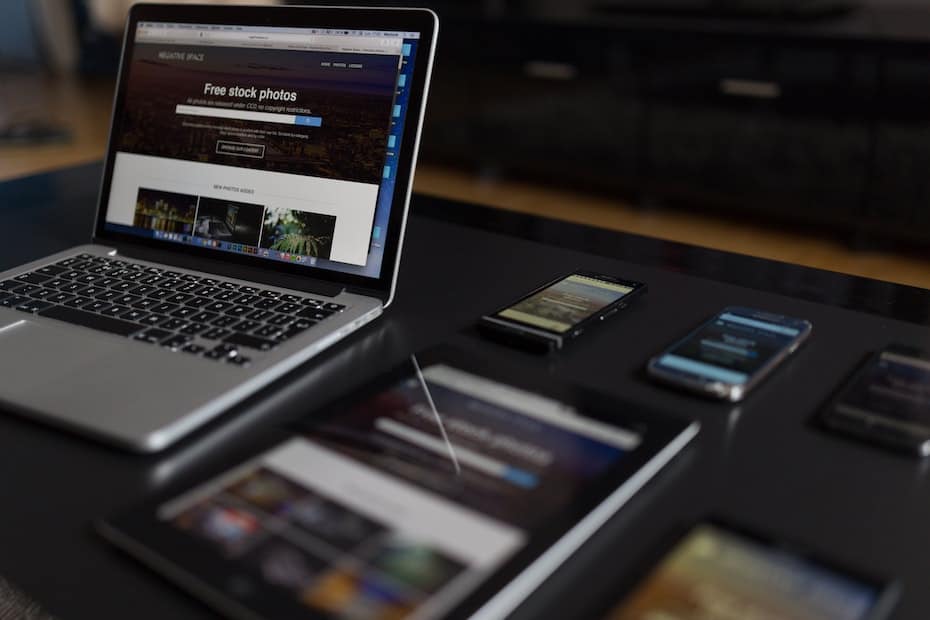A Guide to Image Copyright and Fair Use Images
May 3, 2019

Copyright laws are a confusing territory, put in place to encourage creativity and protect both the rights of the owner and the public’s interest. With so many images available online, if your business works with them, and there are very few that don’t, it’s vital for you to know what you can and can’t use and to adhere to image copyright laws. More than that, you need to understand how to use images in a way that is respectful to the author’s ownership rights. The risks of using images without understanding copyright can be very costly indeed.
To help you avoid any unwanted legal disputes from copyright infringement, we’ve put together this guide so you can have a better understanding of what is right when it comes to image usage.
What is Copyright?
You’ve undoubtedly heard of copyright and seen the copyright symbol here, there and everywhere, but it’s surprising how few of us really understand what it means. Copyright was put in place to protect anything from poetry, novels and songs to computer software, architecture and images. In fact, it protects everything from the moment it is created, whether the work has been published or not. Copyright is an automatic right and while you have the freedom to place the symbol on anything you produce, it will be covered by law regardless.
Copyright is a wonderful thing for content creators, it comes with exclusive rights that govern its use and distribution. The owner is able to exercise a substantial amount of control over their work by using the exclusive rights act:
- They can reproduce the copyrighted work
- They can create derivative works based on the original; and
- They can display, perform and distribute the work publicly
What copyright means for everyone other than the creator, is that, in theory, they need to have express authorization in order to use a copyrighted work. However, there are legal constructs in place that allow copyrighted works to be seen and shared every day. If your business relies upon images, as most do, then it’s vital that you know what you can use and understand the copyright rules for images.
What are Fair Use Images?
Enforcing image copyright laws online is a complicated matter as digital images are so easy to duplicate and reuse. It would be a huge undertaking if every image on the internet needed explicit authorization by the creator to not be in violation of image copyright rules. To counteract this, and to ensure that copyrighted works and the public’s interest are protected, fair use was created.
Fair use images are those which are acceptable for users to adopt and publish. Fair use grants limited use of copyrighted images without any prior authorization from the owner. Determining whether the use of an image adheres to fair use and understanding restrictions around its use, however, is a tricky matter. Fair use isn’t an outright approval to use the image as you wish; it is in place to provide limited use if it benefits the greater public. Copyright laws for images on the internet are complicated; fair use requires an understanding of the following factors:
- The image should be used for educational, nonprofit, reporting or research purposes
- The image should be used as fact-based public content
- The image should only be used as a small low-resolution version
- The image could not have been purchased or licensed
As you can see, fair use is a complicated matter and in no way means that an image is free to use. If you are considering using an image under fair use then it’s vital that you understand the copyright rules that go with it.
How to Legally use Images Online
Anyone using photos online has a responsibility to adhere to image copyright laws. It may seem an impossible task to understand fair use photos and whether you are within your rights to use them. If you do decide to use a fair use image you’ll need to consider why you’re using it, whether you’ve transformed it and how much of it you’re using. If that all sounds like too much uncertainty and too much risk then, fortunately, there are other ways to find images that you can use online.
There are three main options available to you, other than using fair use photos:
- Create your own images
- Download free stock photos
- Purchase stock photos
Ultimately, if there is any doubt as to whether you are correctly using a fair use photo or adhering to copyright rules, then sourcing an image in a different way is the best bet.
Where to Find Free Images Online
To avoid the confusion of fair use images and to be certain you’re on the right side of the copyright laws of images on the internet, the best places to search are storehouses of public domain images. These are images that photographers have contributed to the public domain, stating explicitly that users don’t need to seek permission for their use. Some of the most popular sites for sourcing free images are:
- Unsplash – with over 110,000 contributing photographers, Unsplash has an impressive library of photos and is dedicated to sharing stock photography under its license.
- Pexels – free for commercial use with no attribution required, the site boasts hundreds of thousands of images.
- Pixabay – another stock photo site with over a million royalty free images on offer.
- Flickr – you’ll need to confirm you follow the rules of the creative commons license for each image but there is a huge collection of professional and amateur photos to choose from, and you can search based on your usage requirements.
How Businesses Can Ensure they Follow Image Copyright Rules
It’s vital for businesses to not only adhere to copyright rules for images but to protect the use of their image assets. Companies with extensive photo libraries and digital assets need to find a way to ensure security and to simplify license information. This is ever more important as the digital landscape evolves and copyright laws change.
For companies with extensive digital photos, managing them can be an extremely cumbersome process, leading to potentially costly errors. Implementing a Digital Asset Management (DAM) system can be a great way to manage your stock photo assets and ensure you stick to licensing terms and avoid any legal disputes. DAM systems allow you to control who uses your photos, how, when and where.
Digital asset management allows businesses to create a central database of approved royalty-free images that can be easily searched and used across the organization. Compliant images can be tagged with relevant metadata making them easier for users to find and easier for them to understand any limitations in their use.
What’s more, DAM systems enable you to manage user permissions. Having permissions at the back end of your image library will ensure you know who is using your images and how. You are able to put in place manual approvals if required and grant view-only access where appropriate. The result is that you have confidence that protected images won’t be accidentally used.
Whether your images are fair use, free stock photos or created in-house, you need to make sure that they are used correctly. Everyone within an organization needs to follow copyright rules for images and having a system in place to facilitate the correct usage of your image assets can reduce both the burden of management and the financial risk.





